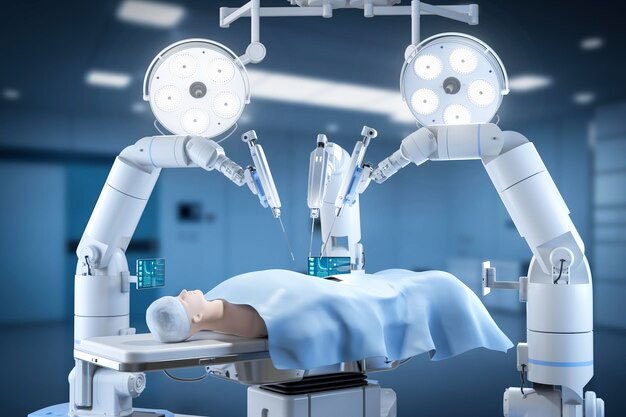
Robotic Surgery vs. Laparoscopy
Surgical technology has advanced by leaps and bounds in recent years, revolutionizing the way surgeries are performed. Two minimally invasive surgical approaches that have gained popularity are laparoscopy and robotic surgery. While both methods offer significant benefits over traditional open surgery, robotic surgery, with its advanced robotic-assisted technology, stands out as a superior option for many patients. In this blog, we will compare Robotic Surgery vs. Laparoscopy, highlighting the advantages of choosing robotic surgery.
1. Precision and Dexterity: Robotic surgery takes advantage of robotic arms that are controlled by a surgeon, providing unparalleled precision and dexterity. These robotic arms can rotate 360 degrees and filter out any hand tremors, enabling surgeons to perform intricate procedures with incredible accuracy. This precision can be crucial in complex surgeries, such as Cholecystectomy, Hernia-Abdominal Wall Reconstruction or Hiatus Hernia procedures, where the margin for error is minimal.
2. Enhanced Visualization: Robotic surgery offers a three-dimensional, high-definition view of the surgical site. Surgeons benefit from magnified, crystal-clear visuals, allowing for a better understanding of the anatomy and more precise movements. In laparoscopy, surgeons rely on two-dimensional images, which may not provide the same level of depth perception and clarity.
3. Increased Range of Motion: Robotic surgical instruments are designed to mimic the natural range of motion of the human hand and wrist. This means that surgeons can perform intricate maneuvers and access hard-to-reach areas within the body with ease. Laparoscopic instruments have limited mobility compared to robotic counterparts, which can restrict the surgeon’s ability to perform certain tasks effectively.
4. Reduced Fatigue: Laparoscopic surgery requires surgeons to maintain a fixed posture and manipulate instruments for extended periods. This can lead to surgeon fatigue, potentially impacting the quality of the procedure. In contrast, robotic surgery allows surgeons to sit comfortably at a console, reducing physical strain and fatigue. The robotic arms translate the surgeon’s movements into precise actions, minimizing the risk of fatigue-related errors.
5. Shorter Hospital Stays: One of the key advantages of minimally invasive surgery is a shorter hospital stay, which benefits both patients and healthcare systems. Robotic surgery often leads to even shorter hospital stays compared to laparoscopy, thanks to its improved precision, reduced complications, and quicker recovery times.
6. Faster Recovery: Patients who undergo robotic surgery tend to experience faster recovery times compared to laparoscopy. The minimally invasive nature of robotic surgery results in smaller incisions, less tissue damage, and reduced pain post-surgery. Consequently, patients can return to their regular activities sooner, which greatly improves their overall quality of life.
7. Reduced Complications: The enhanced precision and visualization offered by robotic surgery result in fewer complications during and after the procedure. Reduced complications mean fewer follow-up surgeries or treatments, further reducing healthcare costs and patient discomfort.
Final verdict, Robotic Surgery vs. Laparoscopy, While both laparoscopy and robotic surgery offer significant advantages over traditional open surgery, the advantages of choosing robotic surgery are compelling. The precision, dexterity, enhanced visualization, increased range of motion, reduced surgeon fatigue, shorter hospital stays, faster recovery, and reduced complications associated with robotic surgery make it a superior choice for many patients.
It’s important to note that the choice between Robotic Surgery vs. Laparoscopy depends on various factors, including the patient’s condition, surgeon’s expertise, and available technology. Nonetheless, as robotic surgical technology continues to advance, it is becoming increasingly clear that robotic surgery is a game-changer in the field of minimally invasive surgery, offering unmatched benefits that can greatly benefit both patients and healthcare providers.